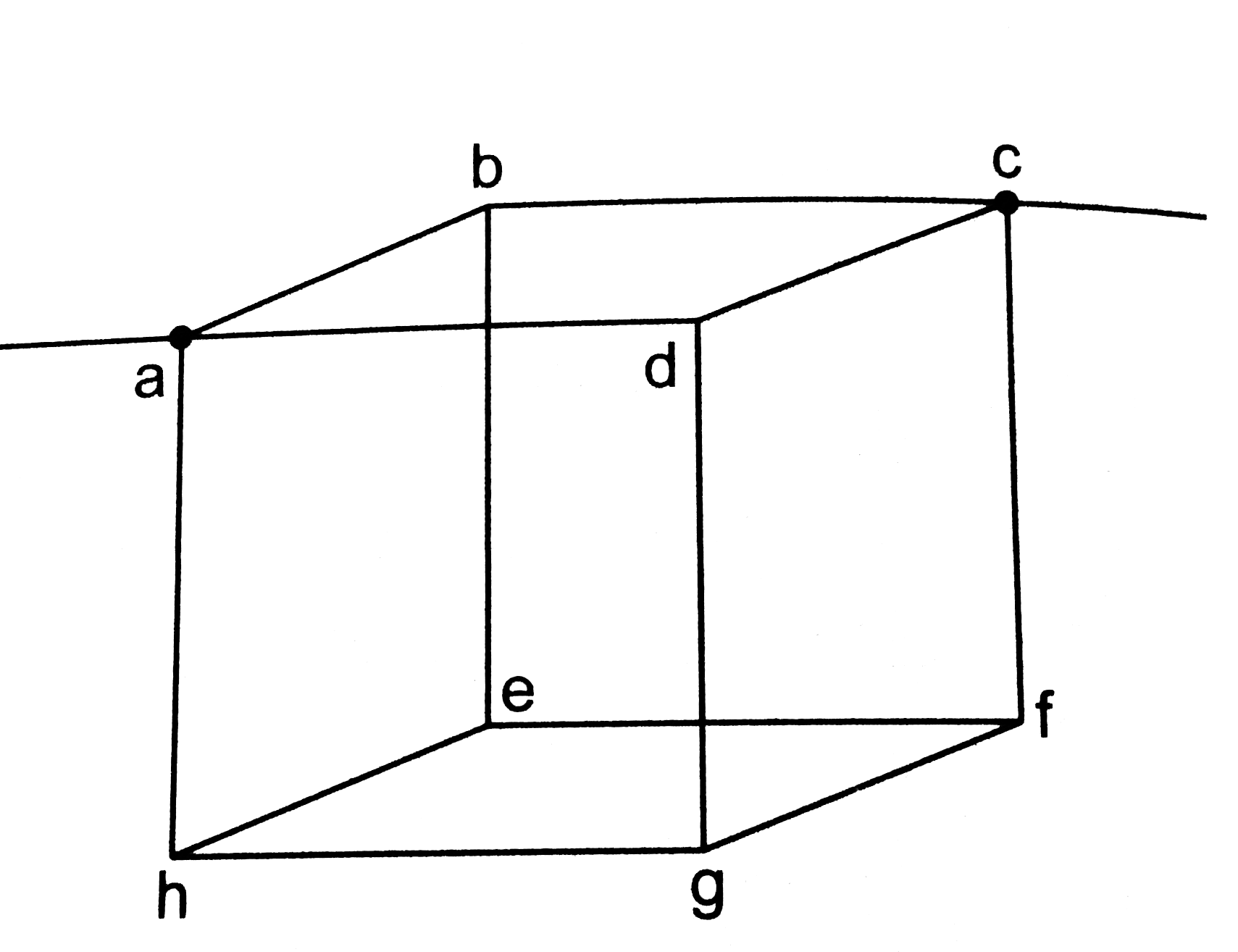Twelve wire, each having equal resistance r, are joined to form a cube as shown in figure.Find the equivalent resistance between the diagonally opposite points a and f.
 Solution in Tamil
Solution in Tamil
Taking circuit ABFGA,
i/3r + i/6r + i/3r = V
⇒(2i3r+i6r)=V
⇒(5i6r)=V
⇒Reff=Vi=56r.

Topper's Solved these Questions
- ELECTRIC CURRENT IN CONDUCTORSBOOK - HC VERMACHAPTER - ELECTRIC CURRENT IN CONDUCTORSEXERCISE - objective 2
9 Videos
- DISPERSION AND SPECTRABOOK - HC VERMACHAPTER - DISPERSION AND SPECTRAEXERCISE - Exercises
11 Videos
- ELECTRIC CURRENT THROUGH GASESBOOK - HC VERMACHAPTER - ELECTRIC CURRENT THROUGH GASESEXERCISE - Exercise
23 Videos
Similar Questions
Electrons are emitted by a hot filament and are accelerated by an electric field as shown in figure .The two stops at the left ensure that the electron beam has a uniform cross-section.

View SolutionA flint glass prism and a crown glass prism are to be combined in such a way that the deviation of the mean ray is zero. The refractive index of flint and crown glasses for the mean ray are 1.620 and 1.518 respectively. If the refracting angle of the flint prism is 6.0∘, what would be the refracting angle of the crown prism ?
View SolutionA discharge tube contains helium at a low pressure. A large potential difference is applied across the tube. Consider a helium atom that has just been ionized due to the detachment of an atomic electron. Find the ratio of the distance travelled by the free electron to that by the positive ion in a short time dt after the ionization.
View SolutionTwelve wire, each having resistance r, are joined to form a cube as shown in figure.Find the equivalent resistance between the end of a face diagonal such as aandc.

View SolutionEach wire shown in figure-3.321 is ofresistance R. The equivalent resistance between the diagonally opposite terminal point A andB is:
View Solution
In the network shown, each resistance is equal to R. The equivalent resistance between diagonally opposite corners is
View SolutionTwelve wires, each of resistance 6Ω are connected to form a cube. The effective resistance between two diagonally opposite corners of the cube is
View SolutionTwelve equal wires each of resistance rΩ form a cube. The effective resistance between the corners of the same edge of the cube is
View Solutionबारह समान तार जिनका प्रत्येक का प्रतिरोध r है, जुड़कर एक घनीय परिपथ जाल बनाते है इसके विकर्णतः सम्मुख कोणों के मध्य समतुल्य प्रतिरोध R की गणना करें |
View Solution12 identical wires, each with resistance R are interconnected to form a cube. Find equivalent resistance of this cube across its diagonally opposite points.
View SolutionTwelve wire, each having resistance r, are joined to form a cube as shown in figure.Find the equivalent resistance between the end of a face diagonal such as aandc.

View SolutionTwelve equal wires , each of resistance r ohm are connected so as to form a skeleton cube. Find the equivalent resistance between the diagonally opposite points 1 and 7.

View SolutionTwelve equal wires each of resistance r are joined to form a skeleton cube. Find the equivalent resistance between two corners on the same edge of the cube.

View SolutionTwelve equal wires, each of resistance r ohm are connected so as to form a skeleton cube. Find the equivalent resistance between the diagonally opposite points 1 and 7.
View SolutionTwelve wires, each having resistance r. are joined to form a cube as shown in figure. Find the equivalent resistance between the ends of a face diagonal such as a and c.

View SolutionTwelve equal wires, each of resistance r, are joined to form a skeleton cube. The current enters at one corner and leaves at the diagonally opposite corner. Find the total resistance between these corners.
View Solution
